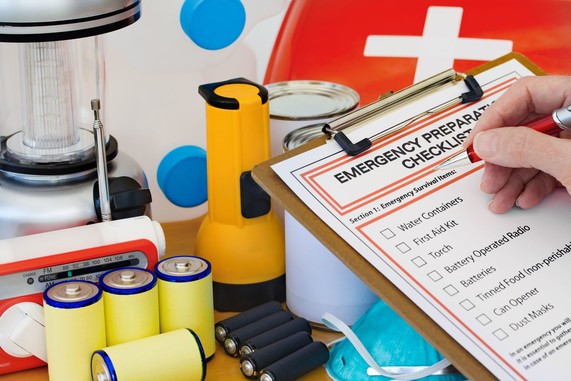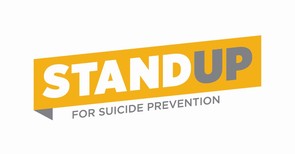 Hurricane season is recognized as falling between mid-August through mid-October for the continental United States when hurricane atmospheric activity is at its peak. Hurricanes and related severe weather patterns mainly affect and are a concern for the south and southeastern coastal regions. However, their influence on inland weather patterns and emergencies are an ever-present concern as illustrated by the recent heavy rains and devastating Kentucky flooding. As many as 37 lives were lost in the 2022 Kentucky floods, which also brought untold suffering and loss of personal belongings and property for those affected.
National Preparedness Month (NPM) is an observance each September to raise awareness about the importance of preparing for natural disasters and emergencies that could happen at any time. The 2022 NPM theme is "A Lasting Legacy: The life you’ve built is worth protecting. Prepare for disasters to create a lasting legacy for you and your family."
Check out the NPM web site for weekly activities and ideas to stay safe during natural disasters and emergencies.

According to the U.S. Centers for Disease Control & Prevention (CDC), the construction industry has emerged as having the highest number of suicides across all occupational groups. Every day there are approximately three jobsite fatalities in construction and an estimated 10-12 suicides among construction workers. Mental health awareness and suicide prevention concerns in the construction industry are just as important as physical job site safety issues.
Each September during National Suicide Prevention Month, the construction industry dedicates a week to raising awareness about the unique challenges workers face in construction that can lead to suicide and what can be done to prevent it. This year's Suicide Prevention Week is slated for September 5-9.
The Construction Industry Alliance for Suicide Prevention (CIASP) was born out of necessity in response to the statistics released in a CDC study ranking construction as the Number 1 industry for deaths by suicide. To combat the mounting statistics, contractors, unions, trades associations, industry service providers and project owners are working together to STAND (Safe Training Awareness Normalizing Decreasing) up for suicide prevention during the week/month/year.
The U.S. Occupational Safety and Health Administration (OSHA) has also taken note and action regarding these construction industry statistics by actively supporting the construction industry's suicide prevention lead, construction worker mental health awareness initiatives through their Suicide Safety Stand Down approach. Check out OSHA's suicide prevention web site safety resources and links to other organizations suicide prevention awareness resources OSHA Preventing Suicides Resources.
The OSHA preventing suicides resources includes information to the national Suicide and Crisis Lifeline where those in crisis can speak with a mental health professional and get support. Confidential support is available 24/7 for everyone in the United States by calling 988. Together, we can save lives.
OSHA's affiliated Center for Construction Research and Training (CPWR) also has worker suicide prevention resources available including a recent study titled "Psychological distress and suicidal ideation among male construction workers in the United States." Occupational and non-occupational factors were associated with construction workers’ psychological distress and suicidal ideation. Study conclusions noted that both illicit opioid use and alcohol dependence or abuse were risk factors, and psychological distress was a strong predictor for worker suicidal ideation. To improve workers’ mental health, it is necessary to integrate workplace injury prevention with alcohol abuse and illicit opioid-use reduction programs for suicide ideation prevention. CPWR resources include:
|
August's E-Update noted that August 31st was International Overdose Awareness Day, and September's continued related focus is on drug and alcohol addiction recovery with National Recovery Month.
As Center for Construction Research and Training (CPWR) research notes, alcohol dependence or abuse and illicit opioid-use reduction programs are necessary for worker suicidal ideation prevention.
The Substance Abuse and Mental Health Services Administration (SAMHSA) website has various drug and alcohol addiction recovery resources available, including an addiction Recovery Tool Kit:
 Last month's e-update also featured a back-to-school safety checklist. School-related safety remains a focus in September with traffic volume increases raising the potential for distraction and congestion in and around school zones and school bus loading and unloading zones.
The National Safety Council (NSC) offers guidance on "Slowing Down – Sharing the Road" with buses, bicyclists and pedestrians in and near school zones:
Also see the Traffic Safety Store's Safety Resources Center blog entry covering 5 Driving Tips to Remember and a YouTube video with tips.
School student pedestrians and drivers need to avoid distractions and be aware of their surroundings in school zones. Cell phones can be an especially deadly distraction. The NSC's year-round "Heads Up-Phone Down" safety tips also are online.
A recent survey found that half of teens say they cross the street while distracted by a mobile device.
Additional September safety campaigns of note include:
As a "look ahead" preview, October includes National Fire Prevention Week (NFPA) and Fire Prevention Month (NSC.) October is also National School Bus Safety Month, Protect Your Hearing and Substance Abuse Prevention month. More to follow in next month's DWD WC Safety E-Newsletter
|